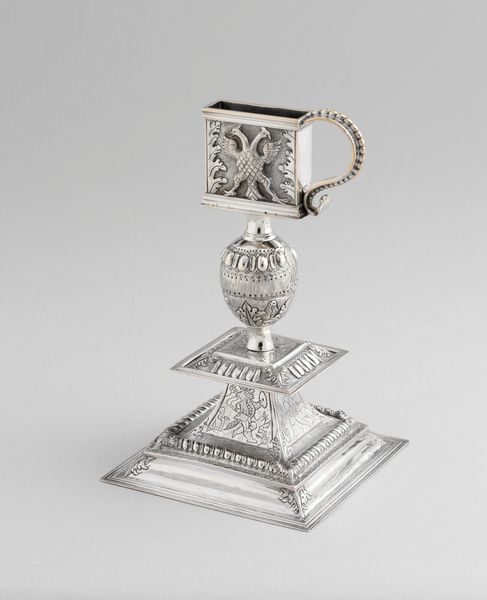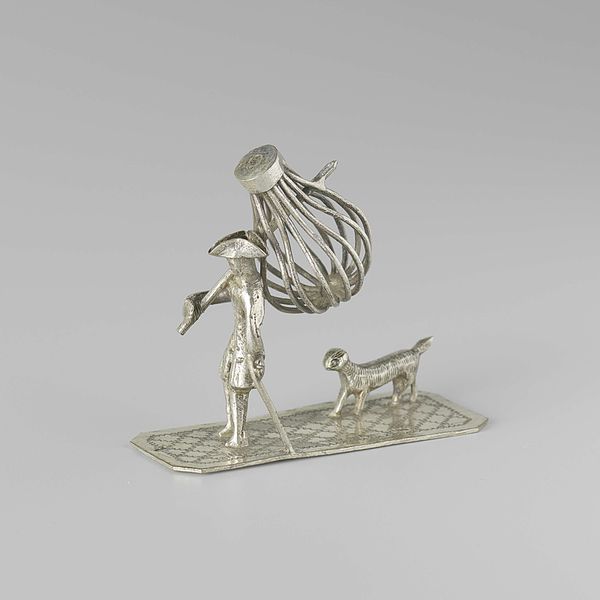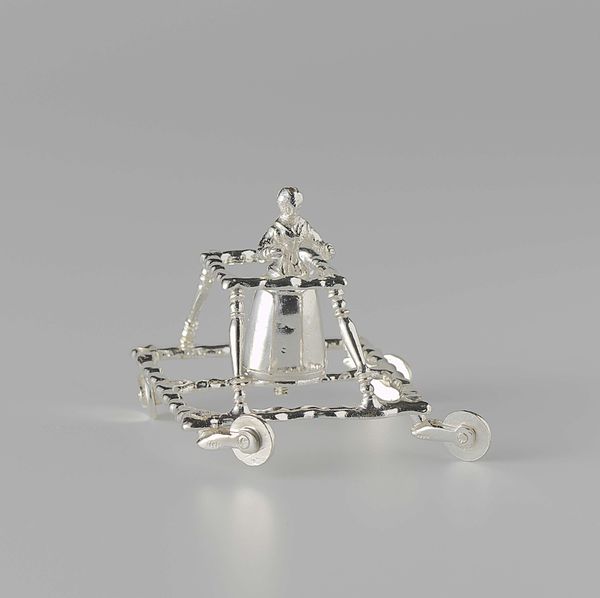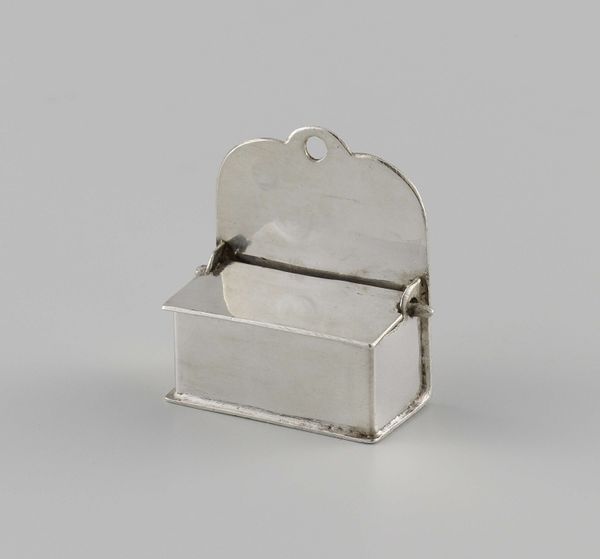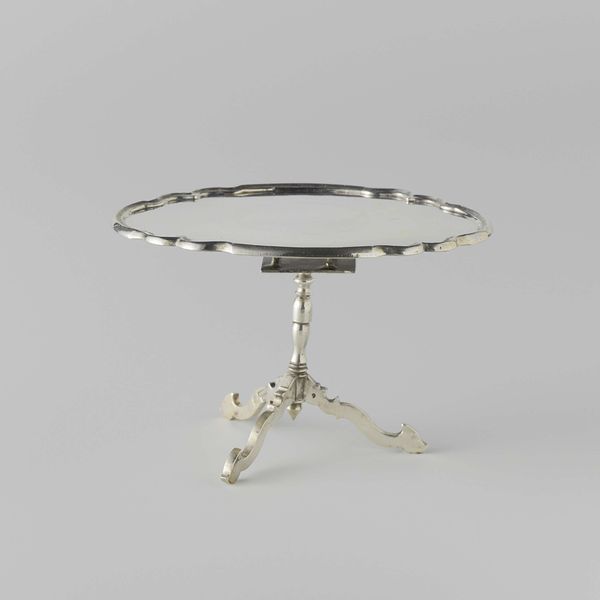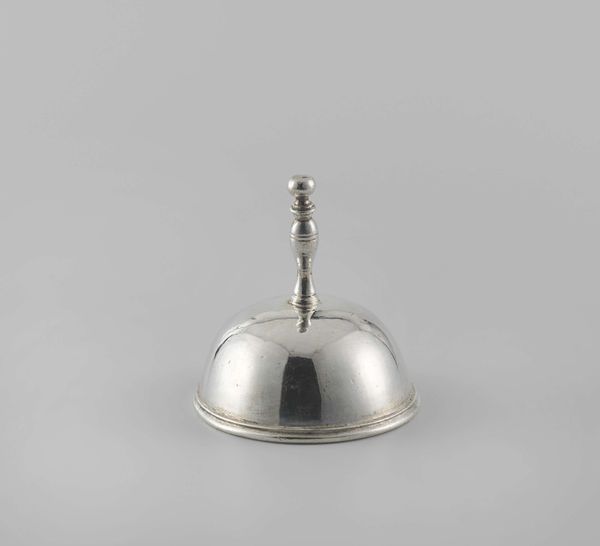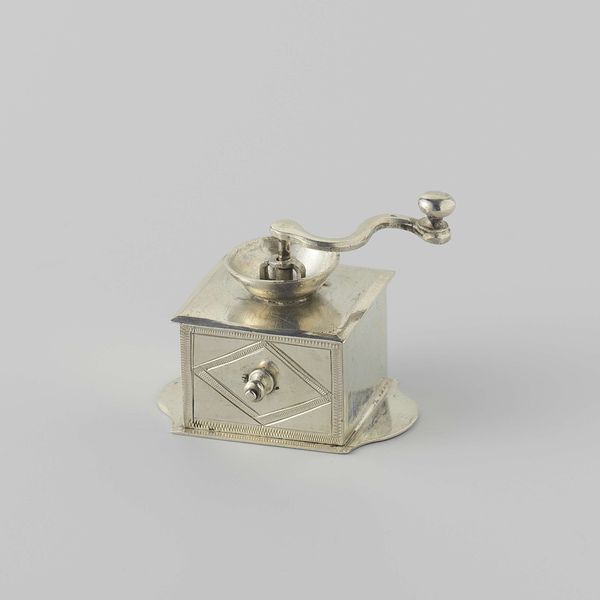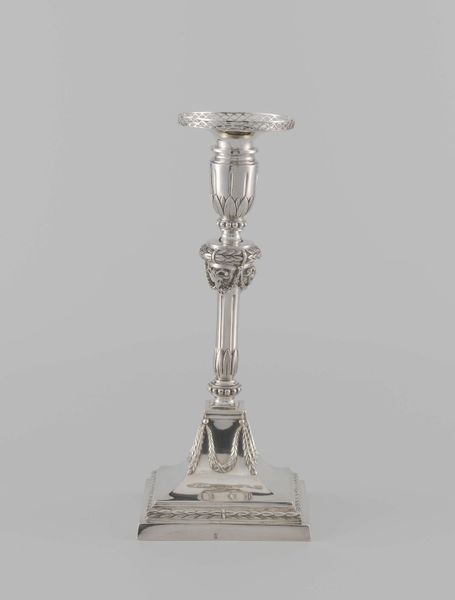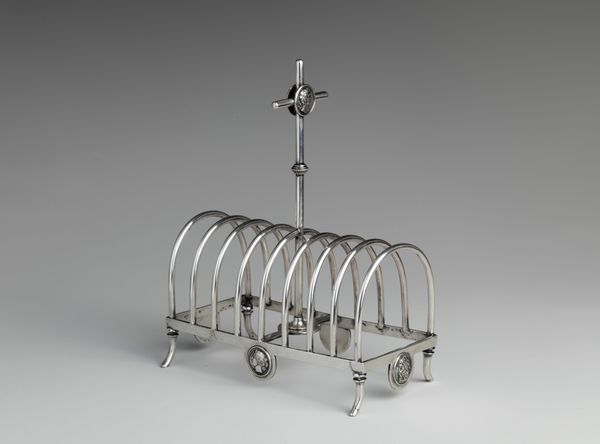
silver, metal, sculpture
#
silver
#
baroque
#
metal
#
sculpture
Copyright: Rijks Museum: Open Domain
Curator: Look at this interesting piece. This is a “Standaard voor kaarsensnuiter,” a silver candle snuffer stand dating from around 1704 to 1734, made by Abraham van der Hoeff. Editor: Immediately I'm struck by how severe and delicate it looks at once. The cubic form holding the snuffer, but then set on this beautifully worked pedestal, and the gleaming silver, give it a surprisingly refined and austere presence. Curator: It's interesting to think about how class and domestic life played into objects like this. Consider that candle snuffers themselves speak to the social realities surrounding light, status, and leisure of the period, doesn't it? Silver, of course, signifies wealth and taste but also denotes whose labor produced this luxury item? Editor: Exactly. And how many steps, each done by someone trained and skilled in the working of silver, did it take to get to this final form? Also, the Baroque era had all this energy for lavish design, but there's restraint here. A real investment of time and work went into something meant for an ordinary domestic task, no? It asks a question of the worth we give to craft now and in previous eras. Curator: Precisely. I find myself also questioning what kinds of performances happened around candlelight in that era, what social relations or gender roles become clearer, through even considering such objects, which helps reveal so much that's lost otherwise in formal history. What sorts of political acts or personal acts took place in its presence? Editor: A quiet reflection perhaps about use, value, and craftsmanship is its great impact today. And I am curious how future technologies might regard simple silver. Curator: A simple silver tool, yet steeped in so many complex narratives! Editor: Absolutely. I see production, labor, the time invested—a miniature monument.
Comments
No comments
Be the first to comment and join the conversation on the ultimate creative platform.
